Faux Leather Tablecloth: DIY in Five Minutes from Yardage
Making your own faux leather tablecloth is so easy, you don’t need to be a crafter or creative to try it! This post contains affiliate links.
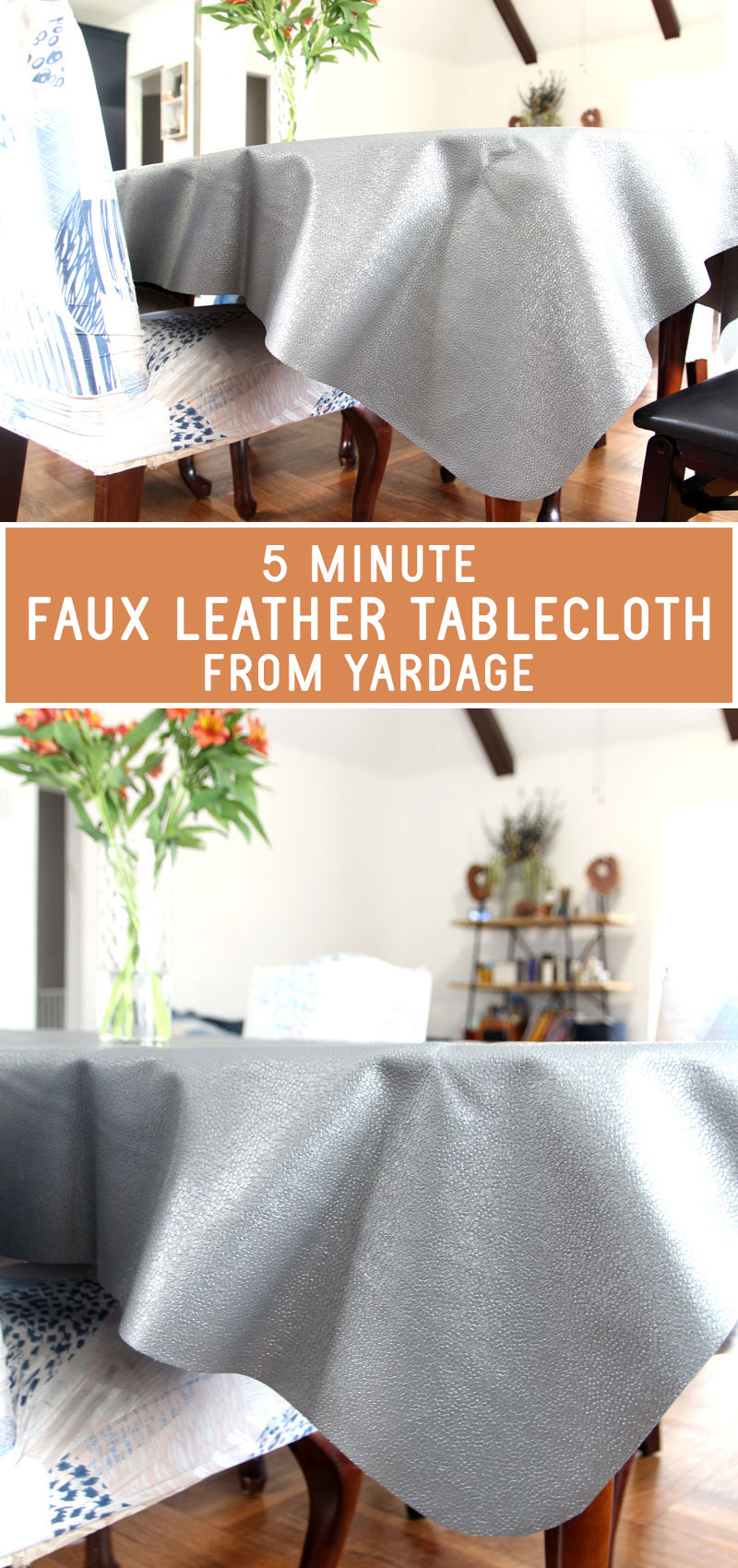
Faux leather tablecloths is a popular trend in the last few years and it’s sooo practical. You don’t need to cover it – just wipe it clean!
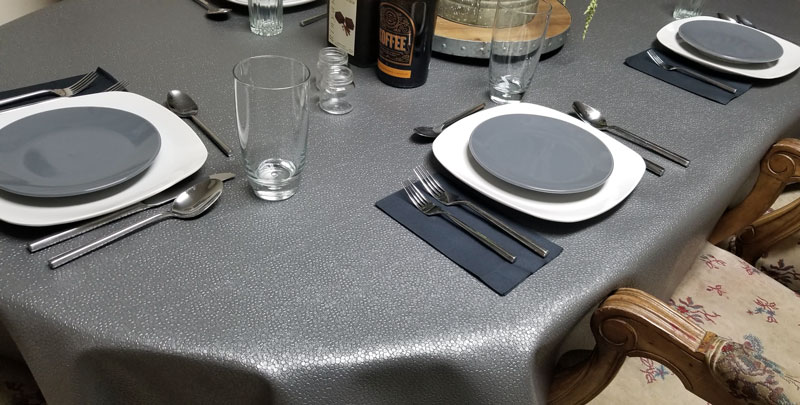
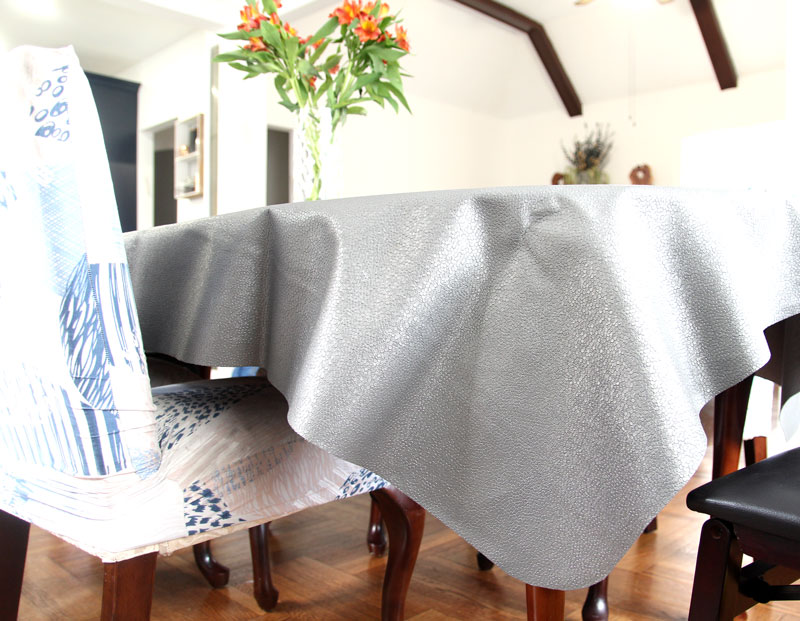
However, they can be hard to find and the options are limited. You know what’s NOT hard to find, and much less limited? Faux leather by the yard. That’s why, knowing the simple no sew hack to make a faux leather tablecloth from yardage can be so convenient. You can choose from much more options and have a beautiful tablecloth.
Just one thing to note: While I thought it would last me forever (and it can) I have not yet nailed the cleaning process. It does simply wipe clean, however, the more texture it has, the more things get into the grooves. So you might not find it to be the perfect solution for your Shabbat tablecloth needs, however, it is a very good one.


What you need to make a faux leather tablecloth
• Faux leather fabric 2-3 feet longer than your table and at least six inches wider
• Marker or tailor’s chalk
• Good fabric scissors
• Six inch round plate
Choosing the right fabric for a leatherette tablecloth
I love fabric.com’s selection of faux leather options. I did, however, create a more in-depth list of my favorite places to buy fabrics online. Search for faux leather and find something that has a good, natural texture. Years ago, I went with a brown alligator skin and the last time I did this, I chose a pewter colored pebbled fabric.
I decided against linking to specific fabrics as they tend to vary and fluctuate with trends (and I want you to enjoy this tutorial for years to come!) However, I will provide a few tips for choosing the correct fabrics for a faux leather tablecloth, as well as how to measure what you need.

Tip 1: The deeper the texture the harder to clean.
Go for a more basic surface texture that isn’t too deep. It can sometimes be hard to tell, but don’t worry. In the worst case you might just need to learn how to care for it a bit better. I have found that using a bit more water helps.
Tip 2: Go for something that feels natural.
Especially when choosing texture, going for something that doesn’t make sense will feel garish and fake. While leather can be colored, a texture that doesn’t make sense feels wrong through and through. This can even be a subtle texture, but it should be as organic as possible, whatever it is.
Tip 3: Opt for neutrals.
Neutrals can range from rich browns to deep navies, however, keep in mind that you’ll want it to match your setting. For a traditional Shabbat look, go for white or cream. Keep in mind that this may stain more than others and require deeper cleaning. While it’s harder to stain than fabric, and wipeable on Shabbat (consult your halachic authority on that just to make sure), anything can stain and lighter colors will show it more.

Tip 4: Measure correctly.
A yard is three feet. Some fabric retailers will sell by half a yard. Opt for extra rather than less. Measure the length of your table and add at least a foot for each end. Keep in mind that you’ll loose a few inches in the curve over the edge.
Tip 5: Pay attention to width.
If you have a very wide table, you might not be able to work with typical yardage. So do pay attention to how wide your tablecloth will be! I’ve found that I don’t mind as much if it hangs a little less on the sides than the ends – the corners make up for it. But I’d say you need at least 6-8 inches overhang on the ends regardless.
Tip 6: Check the backing when purchasing.
I’ve always only used faux leather that had a soft flannel or other woven backing. I don’t know if any comes without, but if it would be just clingy vinyl it would be hard to use. So definitely double check that the fabric you’re purchasing has that flannel backing or something similar.

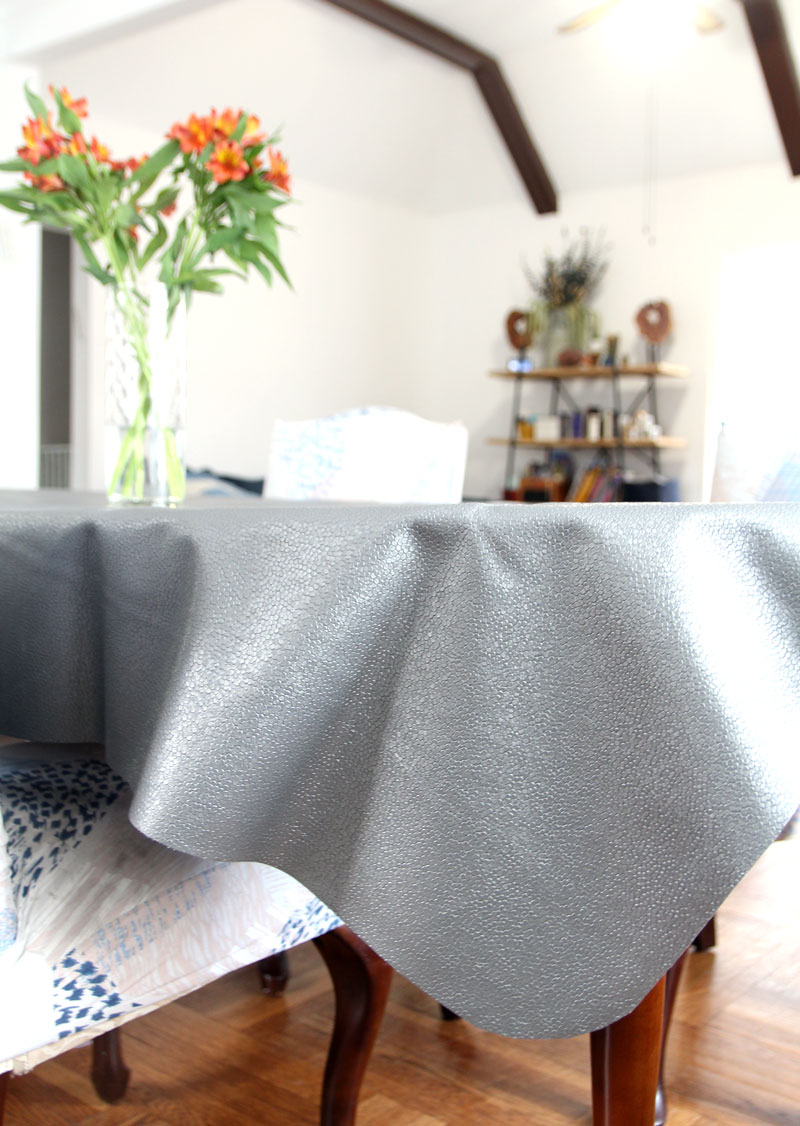
How to make a faux leather tablecloth in five minutes from yardage
I made this a few years ago and snapped some awful photos on the way – but don’t worry, it’s so easy you don’t even need the photos!
Start by spreading your yardage on the table and trimming off extra if there is. Note how it drapes in the corners as your measuring point, and try sitting on the ends to see the comfort level. Unlike with thinner fabrics, it’ll be hard to sit at the ends if it’s too long.
The trick to giving it a polished look is to round out the corners! That’s it! No sewing or hemming required. You can add trim but you really don’t need to. A faux leather tablecloth is enough of a statement that it doesn’t need it.
To curve your corners:
1. Trace around a 6-7 inch salad plate at the corner of your faux leather. I used a silver permanent marker that didn’t show much – little enough that I didn’t care. You can also use tailor’s chalk on the back as well.
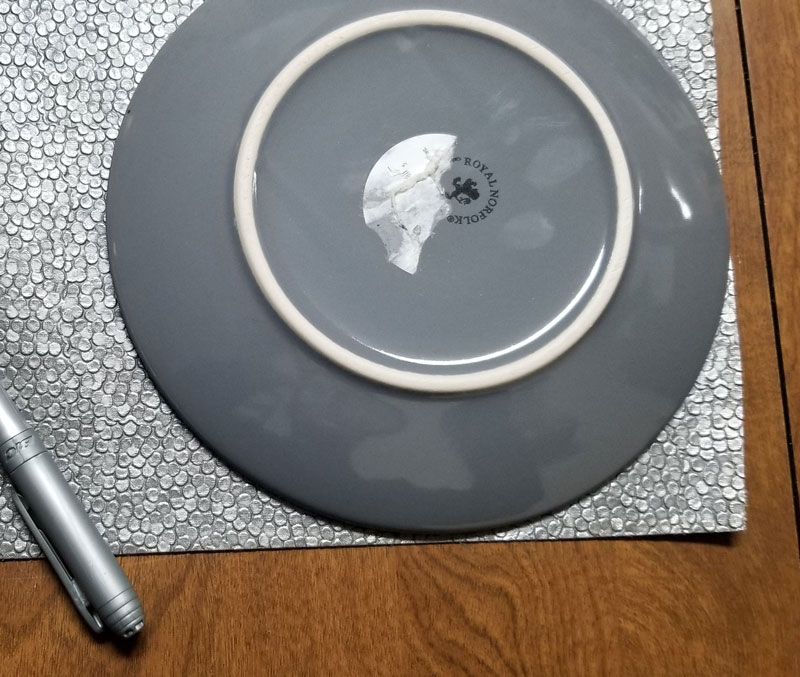
2. Use good scissors to cut around it as neatly as possible. Faux leather is an easy fabric to cut and get a clean edge with.

Your faux leather tablecloth is complete! Which is your favorite fabric to use for this? Comment below!








Thanks for this great info. My table is 70″ round, so I need 90″ width. Can I sew two panels together?
I don’t see why it wouldn’t work. You’ll just have a seam.